1. KATCHATHEEVU ISLAND
TAG: GS 1: GEOGRAPHY ; GS 2: INTERNATIONAL RELATIONS
THE CONTEXT: Tamil Nadu Chief Minister revived the debate over Katchatheevu, an uninhabited and barren island near Rameshwaram, by reiterating the demand for retrieval from Sri Lanka to put a permanent end to the problems of fishermen of the State.
EXPLANATION:
- Addressing a fishermen’s conference in Mandapam of Ramanathapuram district, Tamil Nadu CM pointed out that following his letters to Prime Minister fishermen arrested by the Sri Lankan authorities, were released.
Where is the island of Katchatheevu located?
- Katchatheevu is a 285-acre uninhabited island in the Palk Strait, between India and Sri Lanka. It is no more than 1.6 km in length and slightly over 300 m wide at its broadest point.
- It lies northeast of Rameswaram, about 33 km from the Indian coast. It is about 62 km southwest of Jaffna, at the northern tip of Sri Lanka, and 24 km away from the inhabited Neduntheevu (Delft Island), belonging to Sri Lanka.
- The only structure on the island is the St Anthony’s Church which is visited by both Indians and Sri Lankans for the annual festival. Indians do not need a visa for this.
- Katchatheevu is not suited for permanent settlement as there is no source of drinking water on the island.
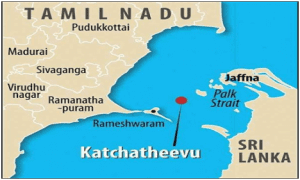
What is the island’s history?
- The island is relatively new in the geological timescale, being the product of a 14-century volcanic eruption.
- In the early medieval period, it was controlled by the Jaffna kingdom of Sri Lanka. In the 17th century, control passed to the Ramnad zamindari based out of Ramanathapuram, about 55 km northwest of Rameswaram.
- It became part of the Madras Presidency during the British Raj. But in 1921, both India and Sri Lanka, claimed Katchatheevu in order to determine fishing boundaries.
- A survey marked Katchatheevu in Sri Lanka, but a British delegation from India challenged this, citing ownership of the island by the Ramnad kingdom. This dispute was not settled until 1974.
What is the agreement ?
- In 1974, then Indian Prime Minister made attempts to settle the maritime border between India and Sri Lanka.
- As a part of this settlement, known as the ‘Indo-Sri Lankan Maritime agreement’ Katchatheevu was ceded to Sri Lanka to deepen its ties.
- As per the agreement, Indian fishermen were still allowed to access Katchatheevu. Unfortunately, the issue of fishing rights was not ironed out by the agreement.
- Sri Lanka interpreted Indian fishermens’ right to access Katchatheevu to be limited to “rest, drying nets and for visit to the Catholic shrine without visa”.
- Another agreement in 1976, during the period of Emergency in India, barred both country from fishing in the other’s Exclusive Economic Zone.
The stand of the Union government on the issue:
- In August 2013, the Union government contended that the islet was a matter of dispute between British India and Ceylon (now Sri Lanka) and there was no agreed boundary, a matter of which was settled through 1974 and 1976 agreements.
- In December 2022, the Union government, while referring to the two agreements, pointed out in its reply in the Rajya Sabha that Katchatheevu “lies on the Sri Lankan side of the India-Sri Lanka International Maritime Boundary Line.” It added that the matter was sub-judice in the Supreme Court.
2. GLOBAL INITIATIVE ON DIGITAL HEALTH (GIDH)
TAG: GS 2: INTERNATIONAL RELATIONS; GS 2: SOCIAL JUSTICE
THE CONTEXT: Union Health Minister launched the ‘Global Initiative on Digital Health’ (GIDH), a World Health Organization-managed network, in the presence of the Director-general, WHO.
EXPLANATION:
- In a significant decision at the G20 Health Minister’s summit, nations have collectively launched the Global Initiative on Digital Health (GIDH).
- This move underlines the growing recognition and commitment to the amalgamation of digital health strategies on a worldwide spectrum.
Global Initiative on Digital Health (GIDH):
- The Global Initiative on Digital Health (GIDH) is a WHO managed network of stakeholders organized to facilitate the implementation of the Global Strategy on Digital Health 2020-2025 and other WHO norms and standards for Digital Health System Transformation.
- The GIDH aims to consolidate efforts and investments in the digital health sector, creating a comprehensive digital health ecosystem.
- The Initiative will serve as a platform to enable a wide global ecosystem to work collectively to promote country capacity and strengthen international cooperation in digital health.
- The initiative aims to focus on four foundational pillars to converge global efforts for digital health and scale up digital solutions with the use of cutting-edge technologies.
- Aligning efforts with the Global Strategy on Digital Health 2020–2025
- Offering quality-assured technical assistance for standards-based and interoperable systems,
- Facilitating the use of digital transformation tools
- Ensuring mutual accountability.
- GIDH will prioritize the following core areas of work:
- Assessing and prioritizing Member States’ needs
- Evaluating the availability and reporting of country-level digital health resources and identifying under-funded priorities
- Supporting technically and financially the accelerated achievement of the strategic objectives defined in the Global Strategy on Digital Health 2020-2025.
- Digital health is a proven accelerator to advance health outcomes and achieve Universal Health Coverage (UHC) and health-related Sustainable Development Goals.
- The key components of the GIDH will leverage existing evidence, tools and learnings and will be co-created through a transparent and inclusive process. Through this evidence-based and comprehensive co-creation process, GIDH will ultimately aim to:
- ALIGN efforts to support of the Global Strategy on Digital Health 2020–2025
- SUPPORT quality-assured technical assistance to develop and strengthen standards-based and interoperable systems aligned to global best practices, norms, and standards.
- FACILITATE the deliberate use of quality assured digital transformation tools that enable governments to manage their digital health transformation journey.
- As a WHO Managed Network (“Network of Networks”), GIDH will address challenges such as duplication of efforts and “products-focused” digital health transformation through a focus on four foundational pillars:
- Country Needs Tracker – facilitating digital health investments to be informed by country priorities;
- Country Resource Portal – identifying traditional as well as innovative resource opportunities, and promoting transparency, while reducing the risk of duplication for enabling a standards-based prospective and retrospective analysis of resourcing gaps in digital health.
- Transformation Toolbox – advocating for quality-assured tools and resources that strengthen country capacity and autonomy to manage the national digital health transformation.
- Convening and Knowledge Exchange – promoting strengthened collaboration and knowledge exchange across global, regional, and national networks in digital health.
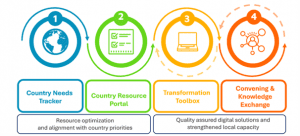
3. KANNIYAKUMARI’S MATTI BANANA
TAG: GS 1: ART AND CULTURE
THE CONTEXT: Recently, Matti banana variety which is native to the Kanniyakumari district was granted the Geographical Indication (GI) tag that is known for its unique characteristics.
EXPLANATION:
- The application for Kanniyakumari Matti banana was filed by Kanyakumari Banana and Horticulture Farmers Producer Company Limited. The process was facilitated by the Tamil Nadu State Agriculture Marketing Board and NABARD Madurai Agribusiness Incubation.
- Matti banana is mostly grown in the Kalkulam, Vilavancode, Agatheeswaram, Thovalai, Thiruvattar taluks of Kanniyakumari district.
- The Matti banana fruit‘s apex is 2.5 – 3 cm long, slightly larger than human fingers, and looks like mouth of a crocodile. It is also called as ‘Crocodile Finger Banana’.
- It is a traditional table banana cultivar of medicinal value and the fruit is highly fragrant, sweet with sub-acid flavour, firm texture and powdery nature.
- Unlike typical banana bunches that grow straight, the Matti’s fingers exhibit a distinct wind-blown appearance. Its low total soluble solids content (TSSC) recommends it as a baby food.
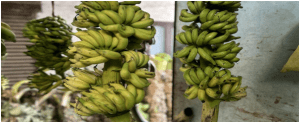
- The fruit has sweet fragrance and honey-like taste .It is served traditionally in marriage feast mixed with payasam.
- There are six known types of the Matti bananas:
- Nal Matti boasts a yellowish-orange colour and fine aroma.
- Theyn [honey] Matti’s pulp tastes like honey.
- Kal Matti gets its name from the calcium oxalate crystals forming in its pulp and black dots on the skin.
- Nei Matti exudes the aroma of ghee.
- Sundari Matti, a Matti clone, with its elongated fingers, thick peel, and creamy white rind, is facing extinction.
- Semmati (red) is a fusion of Matti and Red banana, with a mix of red and yellow pulp containing ascorbic acid beneficial to the growth of children. It is also called Sanna Kathalai and the sugar level is very low and suitable even for diabetics.
- The Matti banana flourishes due to the area’s special conditions, producing a slightly larger-than-human finger-sized fruit with a sweet fragrance and honey-like taste that can’t be replicated elsewhere.
- The uniqueness of the Matti banana is attributed to a combination of factors including humidity, water, temperature, soil composition, and nutrient balance.
- Experts highlight the significance of the Genotype-Environment-Microbiome interaction (G×ExM) for gene expression, underscoring the importance of the environment in shaping genetic traits.
- The distinctiveness of the Matti banana arises from a complex interplay of factors, making it difficult to reproduce its qualities in other areas with a single factor.
NOTE: Refer to 2nd August DNA for more information on Geographical Indication tag.
4. GENETICALLY EDITED MUSTARD
TAG: GS 3: SCIENCE AND TECHNOLOGY; ENVIRONMENT
THE CONTEXT: Indian scientists have developed the first ever low-pungent, disease- and pest-resistant mustard. It is transgene-free, not genetically modified and is based on CRISPR/Cas9 gene editing.
What is gene editing?
- Genome editing is a method for making specific changes to the DNA of a cell or organism.
- These technologies allow genetic material to be added, removed, or altered at particular locations in the genome.
- Human genome editing technologies can be used on somatic cells (non-heritable), germline cells (not for reproduction) and germline cells (for reproduction).
- Several approaches to genome editing have been developed one of them is called CRISPR-Cas9.
- CRISPER Cas9 is short for clustered regularly interspaced short palindromic repeats and CRISPR-associated protein 9.
- It was adapted from a naturally occurring genome editing system that bacteria use as an immune Défense.
How does CRISPR Cas9 works?
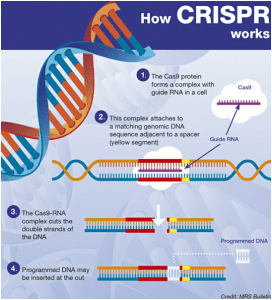
What were the challenges in traditional mustard?
- Traditional mustard types have significant levels of glycosylates, sulphur- and nitrogen-containing compounds, which help to give mustard oil and meal its distinctive pungency.
- They exhibit less resistance against pests and diseases, contributing to lower crop yields and increase need for chemical pesticides.
- Due to its high glucosinolate content, mustard oil is less popular with consumers who prefer cooking tools with milder flavours and odours.
- Rapeseed meal, a byproduct of oil extraction, is utilised as a feed ingredient for animals and birds.
- Certain animals find the meal unpalatable due to the high glucosinolate content, which can also cause goitre, decreased feed intake, and organ abnormalities.
How does the application of CRISPR address the challenges of traditional crop system?
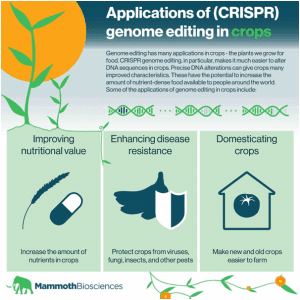
Challenges of CRISPER Cas9 technology:
- As with any gene editing technology, unintended consequences are possible.
- For example, if CRISPR targets an unintended location within the DNA, edits could lead to disease.
- Many countries are struggling with how to regulate these technologies.
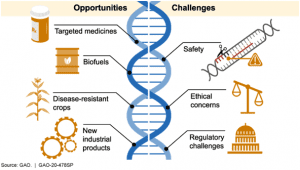
5. AI AND ACOUSTIC SIDE CHANNEL ATTACKS (ASCA)
TAG: GS 3: SCIENCE AND TECHNOLOGY
THE CONTEXT: A research paper titled “A Practical Deep Learning-Based Acoustic Side Channel Attack on Keyboards” was published recently.
Key highlights of the study:
- It revealed that the Artificial Intelligence (AI) can be utilized to decipher passwords by analysing the sound produced by keystrokes.
- It also highlighted the precision of Acoustic Side Channel Attacks (ASCA) when state-of-the-art deep learning models were applied to categorise laptop keystrokes and their mitigation.
- Although ASCA is not a new concept, side channel attacks have become a greater threat due to the advancement of AI and deep learning.
What are ASCA?
- Side-Channel Attacks (SCAs):
- It is a method of hacking a cryptographic algorithm based on the analysis of auxiliary systems used in the encryption method.
- These are performed using a collection of signals emitted by devices, including electromagnetic waves, power consumption etc as well as sound from keyboards and printers to target devices.
- These signals are used to decipher signals that could be used to undermine a device’s security.
- Acoustic Side Channel Attacks:
- A keyboard’s clicks are used to evaluate keystrokes and decipher what is being typed to leak sensitive information.
- These attacks are especially dangerous since consumers underappreciate the potential dangers of the acoustic sounds produced by a keyboard, in addition to being easily accessible.
- When inputting sensitive information, most users cover their screens, but no security measures are taken to hide the sound of the keystrokes.
- The adoption of laptops has expanded the range of ASCAs because laptop models have the same keyboard, which makes it simpler for AI-enabled deep learning models to detect and understand the acoustics.
WAY FORWARD:
- Since 1950 ASCA attacks have existed, when acoustic emanations of encryption devices were utilised to breach their security.
- There is no explicit means of defence against ASCAs, simple changes to typing could reduce the chances of attacks.
- Changes in typing style and creating stronger passwords using combination of upper- and lower-case alphabets can make it more difficult to launch successful ASCA attacks.

